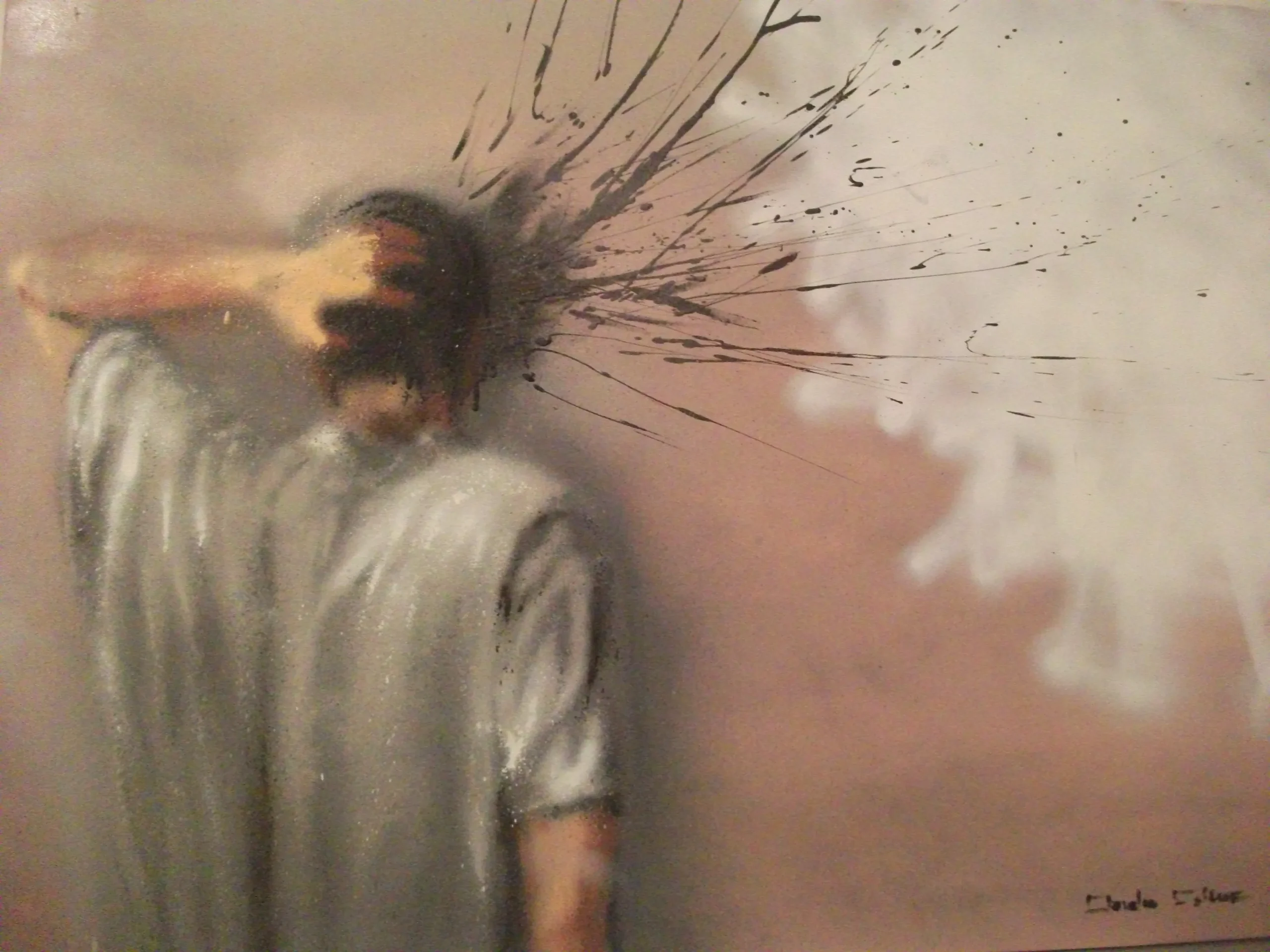Introduction to the concept of self-harm
Art has always been a powerful medium for expression. It reflects our joys, sorrows, and everything in between. Yet, there’s a darker side to this creative outlet: the portrayal of self-harm. Many artists have explored themes of pain and suffering through their work, often romanticizing these experiences in ways that can be both hauntingly beautiful and deeply troubling. As we delve into the intersection of art and mental health, it’s essential to unpack the complexities behind artwork romanticizing self-harm—examining its history, controversy, impact on vulnerable individuals, and the responsibility that comes with artistic expression. In a world where emotions run deep and struggles are often hidden away, how do we navigate this sensitive terrain? Let’s explore together.
The portrayal of self-harm in art throughout history
Throughout history, art has served as a mirror reflecting human experiences, including pain and suffering. Self-harm is no exception. From the haunting images of Edvard Munch to the raw vulnerability in Frida Kahlo’s work, artists have captured their struggles with mental health.
In various cultures, self-inflicted wounds have been depicted not just as acts of despair but also as profound expressions of emotional turmoil. The symbolism often transcends mere representation; it invites viewers into an intimate dialogue about anguish.
During the Romantic era, artists began to glorify suffering. This romanticization transformed personal pain into something almost beautiful—an artistic muse that inspired many masterpieces yet glossed over the reality behind these actions.
As we explore this portrayal through different periods and styles, it becomes clear: art can simultaneously illuminate and obscure the complexities surrounding self-harm.
The controversy surrounding the romanticization of self-harm in art
The romanticization of self-harm in art has sparked heated debates. Many artists depict pain as a form of beauty, often glorifying the act itself. This can lead to troubling interpretations among viewers.
Critics argue that such portrayals trivialize the seriousness of mental health struggles. They worry that this aesthetic could normalize dangerous behaviors, making them seem like an acceptable outlet for emotional turmoil.
Artwork Romanticizes Self-Hard
On social media platforms, images celebrating self-injury circulate widely. The visual allure can be captivating but deeply misleading. It presents a skewed understanding that equates suffering with artistic merit.
Society grapples with how to balance creative expression and ethical responsibility. Artists must navigate these waters carefully—recognizing the potential influence their work may have on vulnerable audiences is crucial in shaping perceptions about self-harm.
The potential impact of romanticizing self-harm on vulnerable individuals
Romanticizing self-harm can have profound effects on those who are already vulnerable. When art portrays self-injury as a form of beauty or emotional release, it sends a dangerous message.
For many individuals struggling with mental health issues, these representations can seem relatable or even aspirational. They may begin to view their pain through a distorted lens—as something artistic rather than destructive.
Such depictions often blur the lines between expression and glorification. This confusion might lead someone to believe that self-harm is an acceptable coping mechanism.
The allure of finding beauty in suffering can be tempting but ultimately harmful. It risks normalizing behaviors that should instead be addressed openly and compassionately, encouraging healthier dialogues around pain and healing.
The responsibility of artists and society in addressing this issue
Artists wield significant influence. Their creations shape perceptions and emotions. When it comes to self-harm, this power can be a double-edged sword.
On one hand, art can provide solace and understanding for those who suffer in silence. On the other hand, depicting self-harm in a romanticized light risks glamorizing pain rather than addressing it authentically.
Society plays an equally crucial role. Conversations around mental health should be normalized, making space for healing rather than stigma. Encouraging open dialogue helps dismantle harmful narratives tied to self-harm.
Both artists and society have the capacity to foster empathy through more thoughtful representations of struggle. By choosing sensitivity over sensationalism, they invite deeper connections with their audiences while prioritizing well-being over aesthetics. This collaborative responsibility is essential in creating an environment that promotes genuine understanding and support instead of glorifying suffering or pain.
Alternative ways to express and cope with pain through art
Art can be a powerful outlet for pain, offering myriad ways to express emotions without resorting to self-harm. One alternative is painting. The act of applying color on canvas invites exploration of feelings and releases pent-up energy.
Writing offers another avenue. Poetry or journaling allows individuals to articulate their thoughts in a safe space. Words can heal when they flow freely onto the page.
Digital art has emerged as a modern tool for expression. Creating graphics or animations can transform emotional turmoil into visual stories that resonate with others.
Music also plays a crucial role in coping with pain. Composing songs or playing instruments provides an escape, turning anguish into melodies that echo shared experiences.
Dance and movement therapy invite physical expression of emotions through body language, breaking the silence surrounding inner struggles while fostering connection and release. These alternatives pave pathways toward healing without glorifying suffering.
Conclusion: Encouraging a healthier and more sensitive approach to discussing and portraying self-harm in art
Art has the power to evoke emotions, spark conversations, and challenge perceptions. When it comes to self-harm, the portrayal in artwork can be both captivating and troubling. While some artists may seek to highlight pain as a form of beauty or deep emotion, it’s essential to tread carefully on this subject.
The romanticization of self-harm through art can resonate deeply with those who struggle with similar feelings. Yet, it also risks glorifying harmful behaviors that many people fight daily. Artists have a unique responsibility to consider their impact on audiences. Society must engage in open dialogues about mental health and its representation in creative spaces.
We can encourage healthier expressions by exploring alternative themes in art—ones that emphasize resilience, healing, and support rather than suffering alone. Promoting empathy within artistic circles fosters understanding instead of glamourizing despair.
By shifting our focus toward compassion and awareness, we create an environment where individuals feel seen without feeling compelled toward harm as an outlet for expression. Emphasizing narratives of recovery or solidarity allows us all to explore human experiences more sensitively while uplifting those who may be struggling silently.










